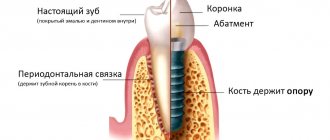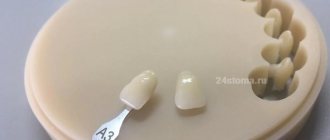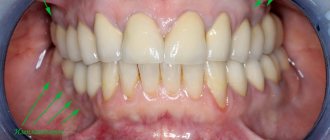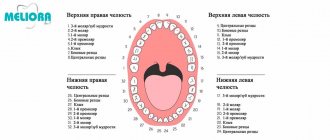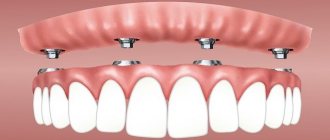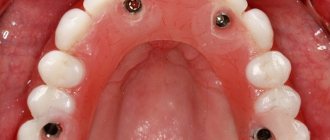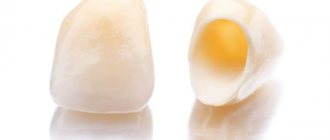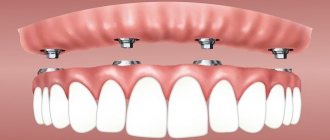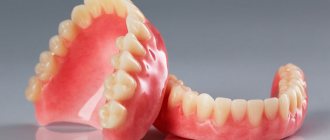A crown is a permanent prosthetic structure that is used to replace the visible part of a missing or damaged tooth. The service life of the product depends on various factors. First of all, this is the quality of the design, accuracy of installation, material and localization in the oral cavity. With proper care and respect, dentures can last more than 10 years. Replacement of the structure is required if there is bad breath, discomfort, looseness or damage. In this case, the patient is recommended to consult a dentist.
Indications for removing structures
Fixing a dental crown or bridge, which is fixed on two supporting units (these can be implants), is a slow and quite labor-intensive process. In a good way, a well-installed design and compliance with all the rules of oral care, professional hygiene every six months allow them to remain in their proper place for a long time - 10, 15 years, or even longer. In any case, the reasons for early removal of a crown or bridge must be serious. Let's take a closer look at them.
Only until 30.09 South Korean implant Osstem - 19,900 rubles.
Hurry up to sign up for a free consultation and lock in promotional prices.
Call now or request a call
Opening hours: 24 hours a day - seven days a week
Pain and destruction of supporting teeth
It happens that a tooth hidden under the cover of a prosthesis begins to bother its owner and hurt. In this case, the person complains not only of pain, but also of an unpleasant putrid odor from the mouth, more precisely, from under the structure (according to science - halitosis). There are several reasons: the root of the covered unit has become infected, caries is progressing, sometimes pulpitis or a cyst has appeared.
If the doctor is unable to reach the site of the lesion, he needs to remove the prosthesis (or the entire bridge structure), that is, completely saw and remove it.
However, you can relieve a person from pain and cure a tooth using a workaround. So, the doctor can drill a hole in the desired area of the crown and perform treatment through it. At the end of the therapeutic measures, the formed cavity is closed with composite materials. But it is important to understand that such a treatment method, which protects the patient from dismantling a non-removable product, shortens the life of the structure. In addition, it cannot always be applied.
Poor installation
It happens that the fixation of orthopedic products was not carried out properly by the doctor. Or, over time, the prosthesis itself has lost its stability. Here are the most common reasons why this can happen:
- mistakes made by an inexperienced doctor when fixing the base of the prosthesis,
- The prosthesis initially does not fit tightly,
- the design of the crown does not coincide with the bite, that is, it causes pain when closing the jaws,
- the cement turned out to be of dubious quality,
- the integrity of the connecting filling layer at the junction points is compromised.
It is not difficult to understand that a crown or bridge is no longer firmly in place. This will be indicated by symptoms such as their staggering, swaying and mobility, especially obvious during a meal or conversation.
Gum problems
Our soft tissues that “cover” the jaw bones can suffer due to various circumstances. The most typical cause is inflammation caused by poor oral hygiene. Caries, damage to the mucous membrane and even prolonged stress1 can cause redness and swelling of the gums (gingivitis). It happens that periodontal tissues are injured due to an unscrupulous approach to the manufacture and installation of the product. If it rubs the free gum, it provokes the development of inflammation. And this is a direct indication for the elimination of the removable structure, and the soft tissues themselves will require therapy.
Violation of aesthetics
It happens that the patient does not have dental indications for removing orthopedic installations. The products do not cause problems to a person, they are intact, without chips or cracks (in the latter case, repairs are sometimes possible, but more often liquidation of the devices is required). And yet, a person still sits in the orthopedic chair in order to dismantle the prostheses. Often this is dictated by the desire to update old structures. It happens that they are subject to deformation and lose their aesthetics. Often we are talking about the desire to replace orthopedic products with more modern, high-quality and durable analogues.
Complex on 4 OSSTEM implants with delayed loading - 140,000 rubles.
Complex implantation Osstem (South Korea) with delayed loading after 4-6 months.
Doctor's work guarantee - up to 5 years (under an agreement on the provision of medical services) Call now or order a call
Opening hours: 24 hours a day - seven days a week
Success of prosthetics on implants.
It is determined by several components:
- It is important not only the correct installation of the implant, but also the high-quality production of the prosthesis for it. The qualification level of two specialists is important: an implantologist and an orthopedist.
- Selection of proven, certified implantation systems.
- The use of high-quality materials not only for the manufacture of prostheses, but also consumables, for example, such as impression mass. The final accuracy of the fit of the prosthesis will depend on the quality of the impression taken.
- Compliance with all recommendations of the attending physicians during the period of dental restoration using this method of prosthetics.
The structure of prosthetics on implants has two components: what is located under the gum (the artificial root itself - the implant) and above the gum - this is the abutment and the crown (prosthesis).
Methods for removing structures
How to remove once installed artificial products? Is it possible to carry out the procedure quickly and without sawing them? In general, it is possible, but it all depends on the indications, materials and strength of fixation of the product. Today there are several methods for this. It is important to proceed from the individual clinical picture of the patient, what goals are being pursued and what therapeutic indications are available. The methods differ in the time it takes to dismantle the prostheses and the cost of the procedure.
Using a Kopp apparatus
Colloquially, this special drill is referred to as a “crown remover.” Removing artificial installations from the front, lateral and chewing teeth using permanent or temporary cement, as well as from implants with its help is considered the most popular method today. When the device is turned on, it produces shocks that gradually break up the layers of cement located under the product. Next comes the tool, which is a hook. With its help, the orthopedist picks up the edge of the crown and removes it from the cement.
The method is considered low-traumatic and does not cause pain to the patient. The only downside of the method is that sometimes the Kopp apparatus scratches the surface of the crown, so it is unlikely that you will be able to use the prosthesis later - you will need to restore it.
Using the Coronaflex device
This device operates using compressed air. The shock wave supplied by the device specifically destroys the cement. The device operates much more carefully. The lining of the non-removable orthopedic structure does not suffer and is dismantled by the doctor without the slightest scratches or chips.
The instrument is expensive, so removing a permanent prosthesis using the Coronaflex device is not cheap. But it still saves the patient’s money – especially if the non-removable device is made of zirconium dioxide. If successful, the crown can even be reused.
Using ultrasound
With this method, crowns are removed from teeth by loosening the stability of the cement base. This is achieved by using the power of ultrasonic waves2. The removed prosthesis remains completely intact and unharmed.
However, remember: this method is not suitable for every material. If the orthopedic device is fixed to glass ionomer cement (a mixture of polyacrylic acid and aluminofluorosilicate glass powder), ultrasound is powerless.
Traditional sawing
This is the crudest, but at the same time the most accessible of all the listed methods. The method is suitable for dismantling ceramic, metal and metal-ceramic crowns. No, contrary to misconceptions, the patient will almost feel pain during the removal of the device. You won't even feel slight discomfort. But the procedure is quite time-consuming. In addition, the integrity of the removed element, which is understandable, cannot be preserved. So for subsequent prosthetics you will need to make a new crown.
On a note! Sawing or saving? It all depends on the purpose of removing the structure. If we are talking about treating a tooth under a crown, then you need to use the most gentle methods so that the prosthesis can be re-attached. If the service life of the product has expired, then it is easier to saw it, because you will still have to carry out re-prosthetics.
Other methods
Today, dentists also use additional methods of removing dentures from permanent and temporary cement, if the patient needs it. Modern pneumatic tools, devices with a hook tip, forceps, a jackhammer, a “Metalift” apparatus and an “Auto Abdicator” crown remover are used; the dental bridge is dismantled using a Higa apparatus. Some removal methods are performed under local anesthesia.
Cost of prosthetics on implants
| Name of service | price, rub. |
| Making a temporary crown supported by an implant | from 5900 |
| Metal-ceramic crown (KHS) supported by an implant | from 27700 |
| Ceramic crown on a zirconium oxide frame supported by an implant | from 45900 |
| Custom titanium abutment | from 17300 |
| Custom Zirconium Oxide Abutment | from 28080 |
| Conditionally removable prosthesis supported by implants | from 62000 |
| Diagnostics | price, rub. |
| Orthopantomogram (as a separate procedure) | 1320 |
| Computer tomogram (fragment of the dentition up to 3 teeth) | 1980 |
| Computed tomogram (1 jaw) | 2730 |
| Computed tomogram (2 jaws) | 4400 |
| Additional manipulations during dental prosthetics | price, rub. |
| Infiltration anesthesia | 640 |
| Taking an impression | from 800 |
Ilgam Vagifovich Mamedov
Dentist, orthopedist
28
years of experience
Doctor of the highest category
All types of orthopedic treatment
Sign up for a consultation
Stages of orthopedic installation removal
The process of dismantling a fixed prosthesis consists of the following steps:
- preparation: an orthopedic dentist examines the patient’s entire oral cavity and the problem area in particular, assesses their condition and comes up with a work plan,
- removal: the doctor and the patient decide on the method and the crown is dismantled,
- diagnostics: the doctor evaluates the integrity of the removed installation, and also carefully examines the condition of the tooth root on which the detached structure was supported. The place for subsequent fixation of the prosthesis is treated with antiseptics (and if necessary, therapeutic measures are carried out, during which the patient is given a temporary plastic crown),
- fixation: if the prosthesis was not deformed during removal, it is ready for reinstallation. Otherwise, you will have to wait until it is restored or a new crown is made. True, you will have to carry out several fittings and be sure to take into account the shape of the treated tooth - it is important that it completely coincides with the internal cavity of the crown,
- recovery: to avoid possible complications, the patient receives from the doctor a list of instructions for easy rehabilitation. At first, it is important to follow a special gentle diet.
What is the time frame for prosthetics on implants?
They are directly dependent on the healing time (osteointegration - fusion with bone tissue) of the implant and on what implantation method was used during the installation process. On the lower jaw, it is possible to begin permanent prosthetics after 3 months; on the upper jaw, a time interval of 4-6 is maintained. These conditions must be met in the case of classical one-stage or two-stage implantation. If there is a lack of bone and osteoplasty or sinus lifting is performed (replenishment of bone deficiency), the time from installation of implants to prosthetics increases.
FAQ
There are many questions on the Internet that concern people who are faced with the need to dismantle orthopedic structures. Let's look at the most popular ones.
Is it possible to remove a permanent crown?
Undoubtedly. And this is far from the most difficult manipulation in the dentist’s chair. But it requires professionalism and skill from the doctor. For this purpose, today clinics most often use the Coppa crown remover (push method), Coronaflex (compressed air exposure) and ultrasound - that is, all the methods listed in the article above.
How is a dental bridge removed?
To dismantle the bridge structure, the doctor needs to carefully examine the patient’s oral cavity and decide on the method of removing it. Is it painful to remove a dental bridge? No. With the help of an ultrasonic scaler, the decementing process occurs quickly and without any pain. However, it all depends on the individual characteristics of the particular patient and pain threshold. If you feel any discomfort, you can always ask your doctor to apply anesthesia.
Zirconium dioxide crown on an implant for all 55,000 rubles instead of 80,000 rubles!
OSSTEM implant (South Korea), individual zirconium abutment, gum former, impression taking.
Creation of a Prettau zirconium crown using 3D modeling technology. Consultation with 2 doctors: an orthopedist and an implantologist for free! Call now or request a call
Opening hours: 24 hours a day - seven days a week
Is it painful to remove the structure?
Is it possible to quickly remove an artificial device from a tooth? Does it hurt? It all depends on the professionalism of the orthopedist and the chosen method of extraction. So, if the tooth has not previously hurt or the structure has not been loosened, the latter can be removed quite quickly and painlessly. If the most cost-effective removal method is chosen or it is important to preserve the integrity of the crown, the procedure may be accompanied by discomfort. But the patient definitely won’t have to suffer. If pain appears, the doctor will give an injection with an anesthetic.
Can I remove the product myself?
Often a tooth covered with a crown manifests itself as anxiety quite unexpectedly. Moreover, the degree of pain can be very high. Such that a person, under the influence of impulses, loses all common sense and begins to try to get rid of the prosthesis right at home. However, it will be difficult to dismantle it correctly yourself. Yes, and it's not safe.
However, there are only 2 exceptions to this rule:
- the orthopedic product has become loose/comes off entirely with its cement base,
- the structure has fallen apart and its fragments need to be removed from the mouth.
In any case, in order to avoid complications after self-removal of a fallen prosthesis or part of it, it is important to see your dentist as soon as possible.
How to decide on the choice of implant and prosthesis.
It is never a bad idea to gain insight and understanding about implantation techniques, types of implantation systems, and prosthetic options. But trying to determine all these subtleties for yourself will not work. The patient discusses all details and options for prosthetics on implants with two attending physicians: an orthopedic dentist and an implant surgeon. After a detailed examination, discussion of possible options and drawing up a treatment plan, the optimal method of dental implantation, type of implant, and one or another type of orthopedic prosthesis supported by implants are selected.
How much does dismantling cost?
The price for the service of removing an orthopedic device consists of the material from which it is made, the number of crowns to be removed and the method chosen by the doctor to remove it. How much does it cost to remove a fixed prosthesis? On average, the cost ranges from 800 to 3,000 rubles. And, as a rule, it is included in the total amount for subsequent treatment and preparation for prosthetics, or more precisely, re-prosthetics.
Which crown is better to choose for an implant?
A metal-ceramic crown is an excellent option for chewing teeth. If prosthetics on implants is carried out in the frontal zone of the smile, then it is better to give preference to zirconium crowns and, accordingly, zirconium abutments. Zirconium dioxide crowns are translucent and look natural. In the case of metal-ceramics, it is possible for metal to penetrate through the gum.
What to do after removing the structure
If the doctor finds an inflammatory process at the site of the removed crown or bridge, therapy will be required in accordance with the cause that caused it (caries, pulpitis, gingivitis, periodontitis, etc.). Accordingly, treatment is first carried out, after which the shape of the tooth is restored, impressions are taken again and a new prosthesis is created (or the old one is returned to its place - if possible).
But it happens that after dismantling the structure, the patient experiences discomfort or even pain. To establish the cause, the doctor needs to carefully examine the tooth and surrounding tissues and assess their condition - this requires an x-ray. It will show the quality of the filled canals and the condition of the structures surrounding the tooth. It happens that the tissues under the crown have changed irreversibly and can no longer be restored. Then repeated prosthetics becomes impossible, the tooth will need to be removed. And you can think about alternatives to prosthetics: installing a bridge or an implant.
- The influence of stress on the condition of the tissues of the maxillofacial area. / Korenevskaya N. A., Gorodetskaya I. V. Journal “Bulletin of Vitebsk State Medical University”. 2009
- Study of the process of removing dentures by destroying the fixing cement under ultrasonic influence. / Kiselev M. G. Vertinskaya A. P. Journal “Science and Technology”. 2007
Author: Chernov A. R. (Thank you for your help in writing the article and the information provided)

